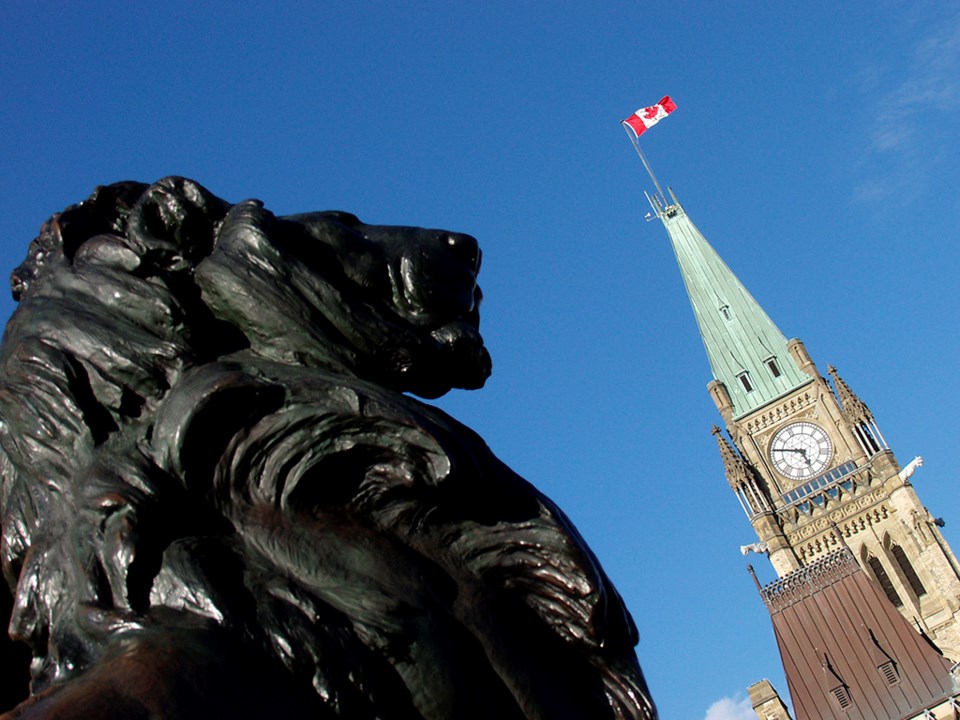November 11, 1920 the body of an unidentified member of the French armed forces killed in action was taken to buried at the Arc de Triomphe in Paris. A granite slab was inscribed: Ici repose un soldat français mort pour la Patrie, 1914–1918 (Here rests a French soldier who died for the Fatherland, 1914–1918). An eternal flame is rekindled each day and the monument is guarded permanently by a specialized unit of the national police.
The task of choosing who would be buried there began with bringing home the bodies of eight French soldiers who could not be identified. They were placed in oak coffins and set on catafalques in Verdun, each guarded by two veterans, where citizens could file past to pay their respects.
A soldier on guard was handed a bouquet of red and white carnations and told to place them on one of the caskets. The one he chose would be buried at the Arc de Triomphe in the Tomb of the Unknown Soldier. A daunting task.
The 21-year old, named Auguste Thin, took the flowers and later said, “A simple thought occurred to me. I belong to the 6th Corps. Adding the numbers of my regiment, the 132nd, equaled the number six which I held onto. My decision was made. It would be the sixth coffin I come across."
A similar event was taking place in Westminster Abbey after a chaplain on the frontlines noticed a grave in a garden at Armentières marked with the words “An Unknown British Soldier”. He sent a letter to the Dean of Westminster requesting an unknown soldier be put to rest in the Abbey to represent all those who could not be buried by their families.
On November 7, 1920 four caskets covered in union jacks were brought from four different battle sites. Brigadier General L. Wyatt chose the one to go to the Abbey. Wyatt said, “The whole ceremony was most moving and impressive. I then followed the gun carriage on foot to Westminster Abbey where the burial took place. The grave was filled in with soil brought from France. The Service was beautiful and conducted by the Dean.”
Many other countries followed these examples and there are Tombs of the Unknown Soldier in more than 50 countries from Albania to Zimbabwe.
Canada’s is at the National War Memorial in Ottawa and contains the remains of a soldier who died near Vimy Ridge where all four Canadian divisions fought together as a combined force. The Commonwealth War Graves Commission was tasked to select one of the thousands of Canadians buried as unknown soldiers, meaning their bodies were recovered but their identity could not be confirmed.
The Commission chose plot eight, row E, grave seven of the Cabaret Rouge cemetery near Vimy Ridge. The remains were exhumed May 16, 2000 and the coffin was brought home in a Canadian Forces aircraft accompanied by many, including a 45-person honor guard.
Before the tomb was sealed, Legion members placed handfuls of soil from each of the provinces and territories, as well as from the soldier’s former grave site. The original headstone is in the Canadian War Museum in an exhibit designed so that sunlight perfectly frames it with a beam of light at 11:00 am on November 11.
A tradition began at the Remembrance Day service months later, that of placing poppies on the tomb by those present for the service. It is a special moment for those in attendance and those watching the service from Ottawa at home.
It’s something we now do in Outlook. At the conclusion of the service in Veteran’s Memorial Park we have the opportunity to place our poppy on the cenotaph. It’s something I am so glad we do. In that park are the names of people I have never met. They are indeed unknown to me. But many knew them. They lived with them. Laughed with them. Grieved for them. In the act of wearing a poppy and attending a service in their honor we are declaring they will be remembered.
I have been thinking about the duty assigned to young Auguste Thin. The significance of choosing which casket would be buried with such distinction meant seven others went unselected. But the others were not forgotten. They now rest near Verdun in the “Square of Seven Unknowns”.
Our task may not carry the same implications as his, but it is no less important. Monuments around the world stand in tribute to unknown soldiers. Markers in our own towns and cities contain the names of thousands more unknown to many of us. Our duty is to ensure that though they may be unknown, they will be unforgotten. That’s my outlook.

.png;w=120;h=80;mode=crop)


